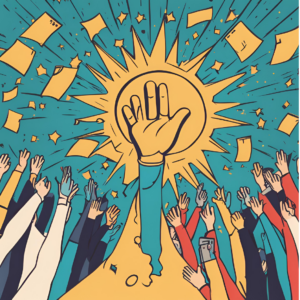
Again, this book does not replace legal advice. If you have actual concerns or questions regarding copyright, you should address them to a lawyer trained in copyright law. The information shared here is only the basics of copyright, not legal advice.
Purposes of Copyright

There are two purposes of copyright: Utilitarian and Author’s Rights.
Utilitarian refers to the idea that copyright law was designed to address the social welfare of creators, promoting creativity and innovation while also providing economic benefits.
Author’s rights, however, aim to protect and recognize the deep connection authors have with their creative works. This rationality is founded on moral rights, which require authors to be credited and preserve the integrity of their creative works.
Copyright Protection
Copyright is automatic! The moment a work is created in tangible form, copyright is granted. You can register your work at the local copyright office to receive certain benefits, but registration is not required to be protected.
What is copyrightable?
- Copyright grants exclusive rights to copyright owners, which means no one else can copy, distribute, publicly perform, adapt, or otherwise use the work without the permission of the copyright holder. Copyright ensures the economic and moral rights of the creator are preserved.
- Copyright grants rights to all works of literary authorship if they meet specific standards of originality to warrant copyright. The work must have been the work of its creator and not copied from another work.
- Copyright does not protect facts or ideas, only the expression of those facts or ideas. Moreover, while copyright gives creators control of their expression of the idea, it does not mean that they have exclusive control of the idea itself.
Review the examples below by selected the Turn button and the Next arrow. There are two cards to review.
Exceptions and Limitations of Copyright
There are instances where copyright protections may be limited to serve the public interest, but copyright protection is balanced against other public interests.
- Automatic protection and long terms (~70 years) have created a massive number of orphaned works in which the copyright owners are unknown or impossible to locate.
- Certain uses are explicitly carved out from copyright, such as purposes of criticism, parody, and access for the visually impaired.
- The “Three-Step Test” involves reproducing the work in a way that does not conflict with the normal exploitation of the work or interests of the author. This test was first established by the Berne Convention and adopted by some countries.
- Fair Use determined by a four-factor test (U.S. only) is a test that evaluates the effect use will have on the potential market, the amount of work used, the nature of the work, and the purpose or character of the use. A federal court judge determines fair use.
Reference
- Creative Commons (n.d.) Creative Commons certificate for educators, academic librarians, and GLAM. Creative Commons. https://certificates.creativecommons.org/cccertedu/chapter/1-1-the-story-of-creative-commons/

